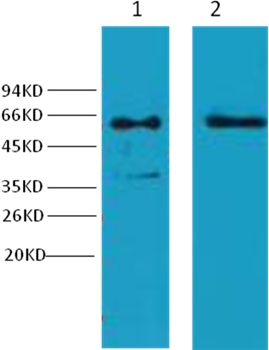![IHC-P analysis of human pancreas tissue section using GTX02661 Cytokeratin 6a antibody [rKRT6A/2100]. IHC-P analysis of human pancreas tissue section using GTX02661 Cytokeratin 6a antibody [rKRT6A/2100].](https://www.genetex.com/upload/website/prouct_img/normal/GTX02661/GTX02661_20210319_IHC-P_w_23053122_920.webp)
IHC-P analysis of human pancreas tissue section using GTX02661 Cytokeratin 6a antibody [rKRT6A/2100].
Cytokeratin 6a antibody [rKRT6A/2100]
GTX02661
ApplicationsImmunoHistoChemistry, ImmunoHistoChemistry Paraffin
Product group Antibodies
ReactivityHuman
TargetKRT6A
Overview
- SupplierGeneTex
- Product NameCytokeratin 6a antibody [rKRT6A/2100]
- Delivery Days Customer9
- Application Supplier NoteIHC-P: 1-2 microg/ml. *Optimal dilutions/concentrations should be determined by the researcher.Not tested in other applications.
- ApplicationsImmunoHistoChemistry, ImmunoHistoChemistry Paraffin
- CertificationResearch Use Only
- ClonalityMonoclonal
- Clone IDrKRT6A/2100
- Concentration200 ug/ml
- ConjugateUnconjugated
- Gene ID3853
- Target nameKRT6A
- Target descriptionkeratin 6A
- Target synonymsCK-6C, CK-6E, CK6A, CK6C, CK6D, K6A, K6C, K6D, KRT6C, KRT6D, PC3, keratin, type II cytoskeletal 6A, cytokeratin 6A, cytokeratin 6C, cytokeratin 6D, keratin 6A, , type II, keratin 6A, type II, keratin, epidermal type II, K6A, type-II keratin Kb6
- HostMouse
- IsotypeIgG1
- Protein IDP02538
- Protein NameKeratin, type II cytoskeletal 6A
- Scientific DescriptionThe protein encoded by this gene is a member of the keratin gene family. The type II cytokeratins consist of basic or neutral proteins which are arranged in pairs of heterotypic keratin chains coexpressed during differentiation of simple and stratified epithelial tissues. As many as six of this type II cytokeratin (KRT6) have been identified; the multiplicity of the genes is attributed to successive gene duplication events. The genes are expressed with family members KRT16 and/or KRT17 in the filiform papillae of the tongue, the stratified epithelial lining of oral mucosa and esophagus, the outer root sheath of hair follicles, and the glandular epithelia. This KRT6 gene in particular encodes the most abundant isoform. Mutations in these genes have been associated with pachyonychia congenita. In addition, peptides from the C-terminal region of the protein have antimicrobial activity against bacterial pathogens. The type II cytokeratins are clustered in a region of chromosome 12q12-q13. [provided by RefSeq, Oct 2014]
- ReactivityHuman
- Storage Instruction2°C to 8°C
- UNSPSC12352203


![FACS analysis of HeLa cells using GTX17910 Cytokeratin 6A antibody [KRT6A/2368]. Blue : Primary antibody Red : Isotype control](https://www.genetex.com/upload/website/prouct_img/normal/GTX17910/GTX17910_20200115_FACS_191_w_23060620_116.webp)
